Suncheon, a small city nestled in the heart of South Korea's Jeollanam Province, is widely celebrated for its gorgeous gardens and ecological beauty. While the Suncheon Bay National Garden draws visitors from around the world, this charming city offers so much more beyond its renowned horticultural displays.
From historical temples and vibrant street markets to scenic waterways and cultural festivals, Suncheon is a treasure trove of unique experiences waiting to be discovered. Whether you're a history buff, a Korean food lover, or an adventure seeker, you'll find something in Suncheon to pique your interest and enrich your travel itinerary.
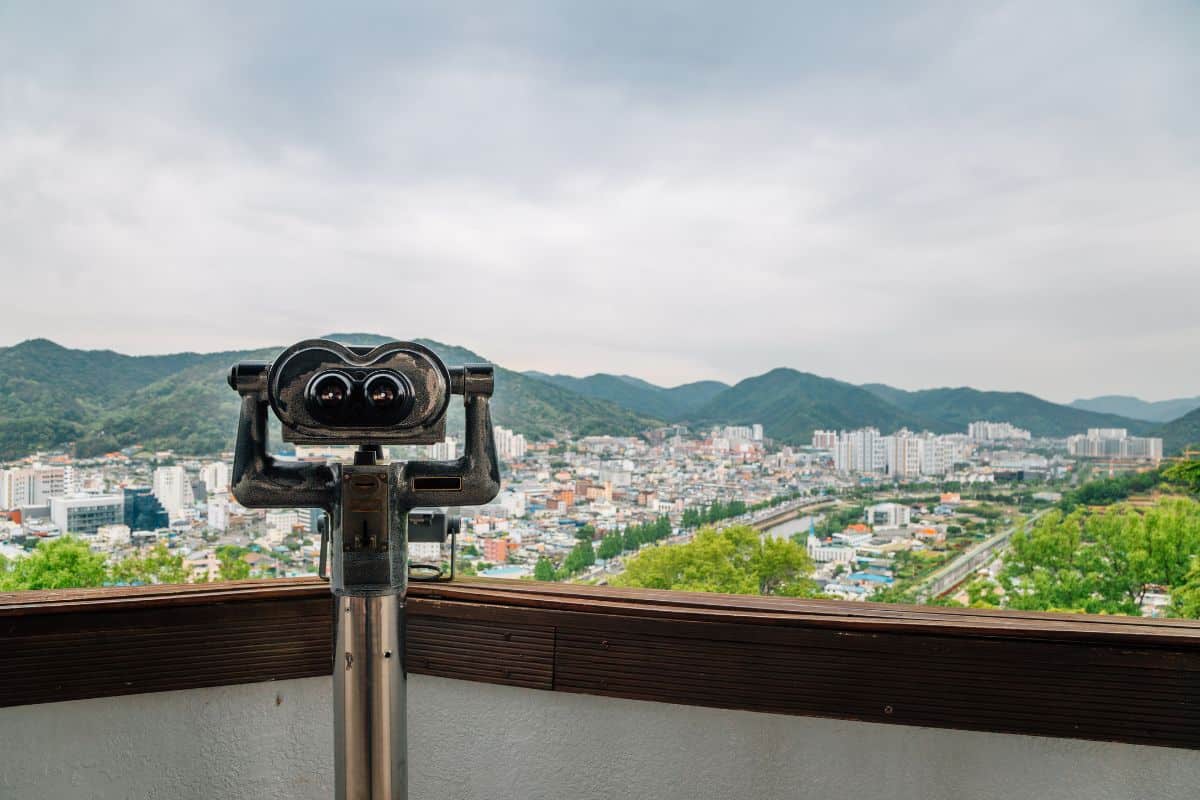
Jump to:
🌇 Why Visit Suncheon?
Suncheon, just a short drive from Busan, offers a mix of charm and industry. Known for its farming, it's also an industrial hub, but this unique blend makes it an interesting spot for travelers seeking both rural peace and urban energy.
Located in the far south of Korea along the East China Sea, Suncheon is said within Korea to be a gateway to South Jeolla's natural and cultural treasures, like beautiful temples, old fortresses, and the tea culture from nearby Boseong green tea fields.
Suncheon stands out as a Korean UNESCO World Network of Biosphere Reserve, placing it among world-famous natural sites like Jeju Island. The city's landscapes and diverse ecosystems are notably well-preserved, allowing visitors to explore lush wetlands, vibrant wildlife, and rich biodiversity all in one place.
🚆 How to Get to Suncheon
To Suncheon From Busan
The distance from Busan to Suncheon is about 110 miles/178 km by road. Driving from Busan to Suncheon is by far the fastest option, taking around 1 hour and 53 minutes, and allows for spontaneous stops along the way.
Alternatively, you can take a bus, which takes about 2 hours and 20 minutes with transfers, and runs every 4 hours from the Busan Central Bus Terminal. If you prefer trains, the Korail Mugunghwa from Sasang Station offers a long but comfortable 3-hour direct ride, with services running 5 times daily.
To Suncheon From Seoul
Traveling from Seoul to Suncheon is about 200 miles/326 km by road. The best way to get there is by train, taking about 2 hours and 39 minutes from Yongsan Station to Suncheon Station, with a schedule running every hour daily.
For bus travel, there's a direct service from Seoul Central City Bus Terminal to Suncheon Bus Terminal by Ko Bus, leaving every hour - the trip takes about 3 hours and 40 minutes, though you could also drive to Suncheon form Seoul in a comparable amount of time.
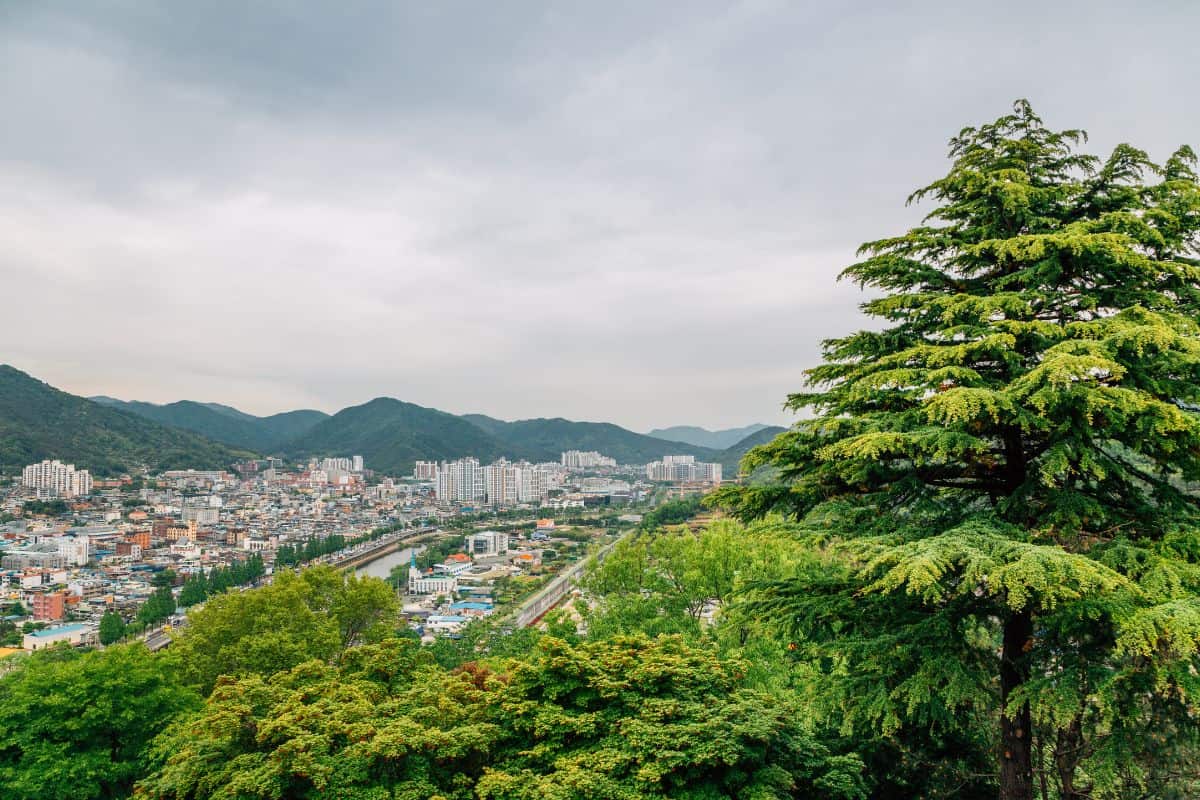
😎 Things to Do in Suncheon
Suncheon Bay Wetland Reserve
Hours: 8am-8pm, Monday to Sunday
Suncheon Bay Wetland Reserve is a top wetland on Korea's southern coast. Recognized by the Ramsar Convention and UNESCO, this reserve displays natural coastlines and a diverse ecosystem. It was listed among the Ministry of Culture, Sports, and Tourism’s 100 Must Visit Spots In Korea (2019-2020) and CNN’s 50 Beautiful Places to Visit in South Korea (2019), highlighting its importance as a must-visit.
The reserve features brackish water zones, salt marshes, reed beds, and tidal flats, home to 239 bird species, including 36 endangered ones. Bird watchers can spot cranes like Hooded Cranes, White-naped Cranes, Common Cranes, Siberian Cranes, and Canadian Cranes.
Each season offers something special: summer’s green reeds and crabs, autumn’s golden hues and migratory birds, winter’s wild geese and ducks, and spring’s tidal flats and warblers. To get there from Suncheon Station, you can take a local bus (Bus No. 67) to Suncheon Bay Wetland Reserve.
To protect this habitat, please do follow rules like not collecting plants, staying on trails, and avoiding food or smoking.
Address: 513-25 Suncheonman-gil, Suncheon-si, Jeollanam-do, South Korea
Hours to Spend: 4-5 hours
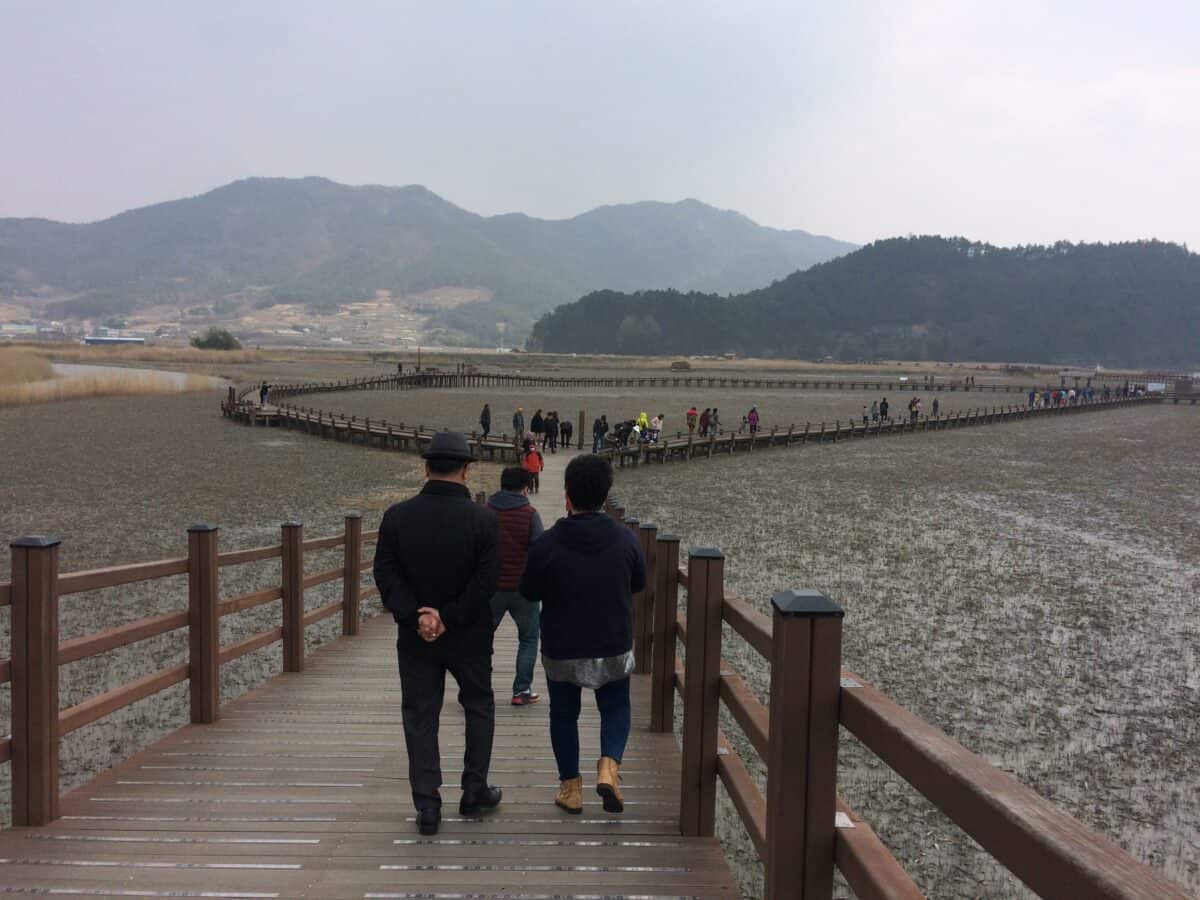
Naganeupseong Folk Village
Hours: 9am-6pm, Monday to Sunday
Nestled in Suncheon's beautiful landscapes, Naganeupseong Folk Village offers a glimpse into Korea's rich history. Dating back to the Baekjae period (BC 18 – 660 AD) and flourishing during the Joseon dynasty (1392 AD – 1897 AD), the village eventually turned into a fortified site to defend against Japanese pirate attacks.
At its peak, it housed around 337 families and 950 people, with protective walls built in 1397. Unlike the tiled-roof hanoks of Bukchon or Jeonju, Naganeupseong’s hanoks, called chogaijip, are thatched with rice straw—a nod to Joseon-era architecture.
Visiting Naganeupseong is really cool - it feels like stepping back in time. You'll enter through the Nakpung-nu Pavilion at the East Gate and explore traditional crafts like paper art and blacksmithing, and don’t miss the Lotus Pond near the fortress wall for a perfect photo spot.
Climb the walls to the Ssangcheong-nu Pavilion at the South Gate for a panoramic view of the village and rice fields. From the West Gate, visit the Nangminggwan Folk Exhibition Hall—though in Korean, the displays are engaging. Nearby, try traditional games like tuho at Dongheon, the old government office.
Address: 6-4 Pyeongchon-ri, Nagan-myeon, Suncheon, Jeollanam-do, South Korea
Hours to Spend: 2-4 hours
Hwapo Beach
Hours: 24 hours, 7 days a week
Hwapo Beach may not have vast sandy stretches for lounging, but it's a beautiful coastal spot. It's small and intimate, offering peaceful seaside views without the usual beach crowds, but instead of sunbathing, enjoy the scenic beauty and gentle waves. Hwapo Beach lets you experience Suncheon’s tranquil coastal charm.
A highlight of visiting Hwapo Beach is its nearby seafood restaurants, all of which serve fresh catches and showcase the region's culinary traditions. After enjoying the calm beach, head to one of these restaurants for a tasty and memorable meal.
Address: 669 Gangbyeon-ro, Suncheon, Jeollanam-do, South Korea
Hours to Spend: 2-3 hours
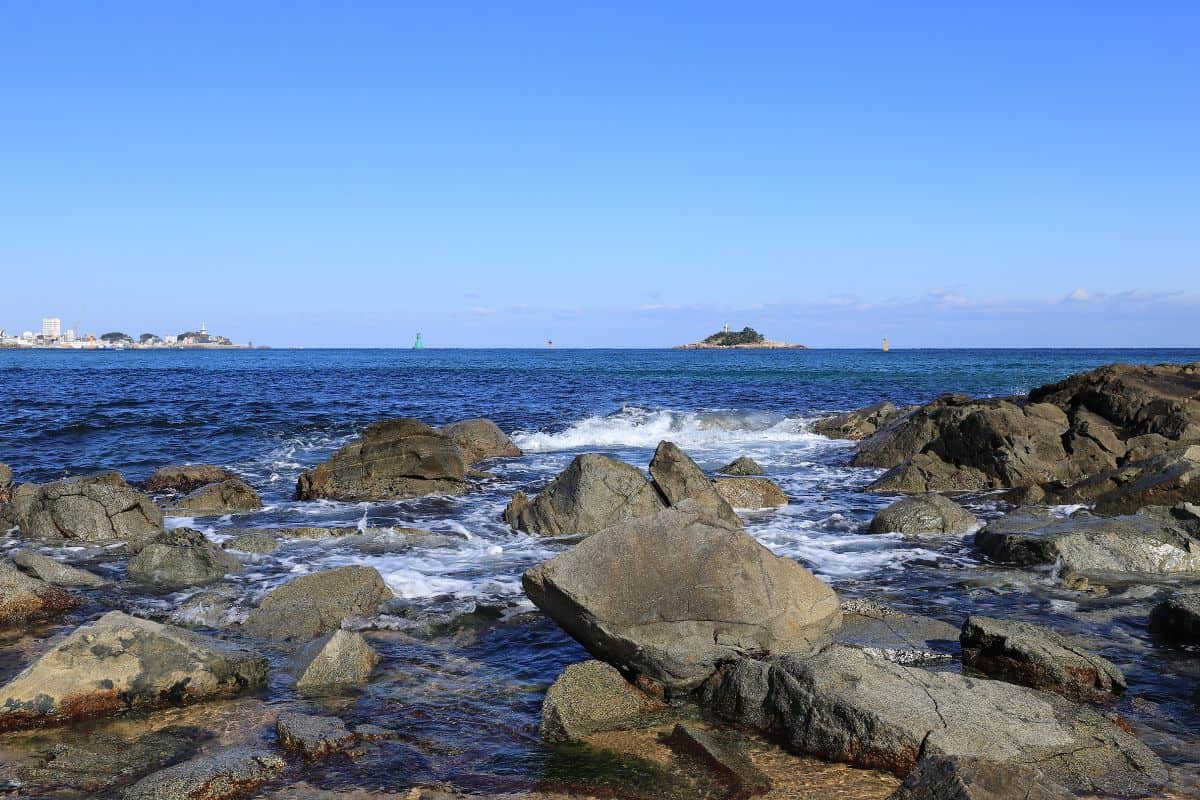
Songgwangsa Temple
Hours: 9am-6pm (5pm during winter), Tuesday to Sunday
Songgwangsa Temple is a must-see for travelers in the Suncheon area, known as one of Korea's key Buddhist temples, alongside Tongdosa and Haeinsa. The mountain's pine trees gave it the name "Songgwangsan." This historic site holds cultural treasures, like a 13.9 cm high wooden altar with a triad of Buddhas.
However, the temple's greatest asset is its community of around 150 monks who train rigorously each year. Other activities include pilgrimages to secluded hermitages, Seon Meditation sessions, and interactions with the monks.
Travelers can even join templestay programs, fitting for all backgrounds and beliefs. The highlight is participating in morning and evening chanting services with the monastic community in the Main Buddha Hall. This activity leaves guests deeply satisfied, chanting alongside hundreds of monks.
Address: 100 Songgwangsaan-gil, Songgwang-myeon, Suncheon-si, Jeollanam-do, South Korea
Hours to Spend: 2 hours
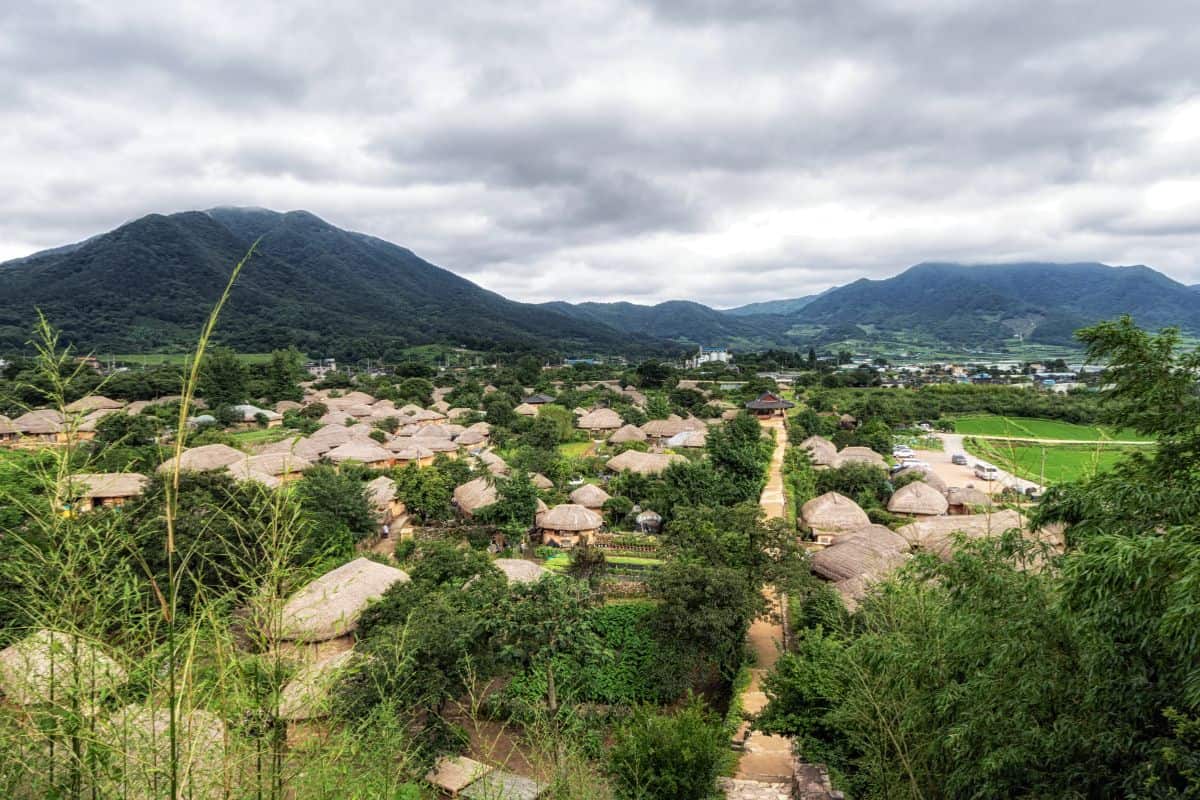
Aretjang Market
Hours: 9am-7pm, Monday to Sunday
One delightful activity in Suncheon is exploring the vibrant Araetjang outdoor market. This bustling market is a sensory feast, with a variety of food stands nestled among stalls selling everything from fresh produce to local crafts.
Wander through the maze of vendors and soak in the lively atmosphere, sampling delicious street food such as tteokbokki, hotteok, and an array of freshly made seafood delicacies.
Not only is it a wonderful place to relish authentic Korean flavors, but it also offers a genuine glimpse into local life, making it an unmissable experience for any traveler.
Address: 60, Jangpyeong-Ro, Suncheon, Jeollanam-do 57961, South Korea
Hours to Spend: 2-3 hours
Seonamsa Temple
Hours: 24 hours, 7 days a week
Seonamsa Temple, located in a beautiful valley at the western end of Mt. Jogyesan in Jeollanamdo, offers a peaceful escape from city life. To get there, note that visitors need to walk 1 km (about ⅔ of a mile) from the car park. The walk, though a bit long, is worth it, especially in the Korean winter.
On the way, you'll see 2 lovely rainbow-shaped bridges. The bigger one, Seung-seon Bridge, is National Treasure No. 400 of South Korea and is famous for its beautiful design, making it a popular spot for filming Korean TV shows and movies.
At Seonamsa Temple, visitors can join a temple stay and experience monastic life. Near the car park, there's a great restaurant that serves sanche-jeongsik, a delicious mountain-forraged meal with wild vegetables.
Address: 450 Seonamsa-gil, Seungju-eup, Suncheon-si, Jeollanam-do, South Korea
Hours to Spend: 2-3 hours
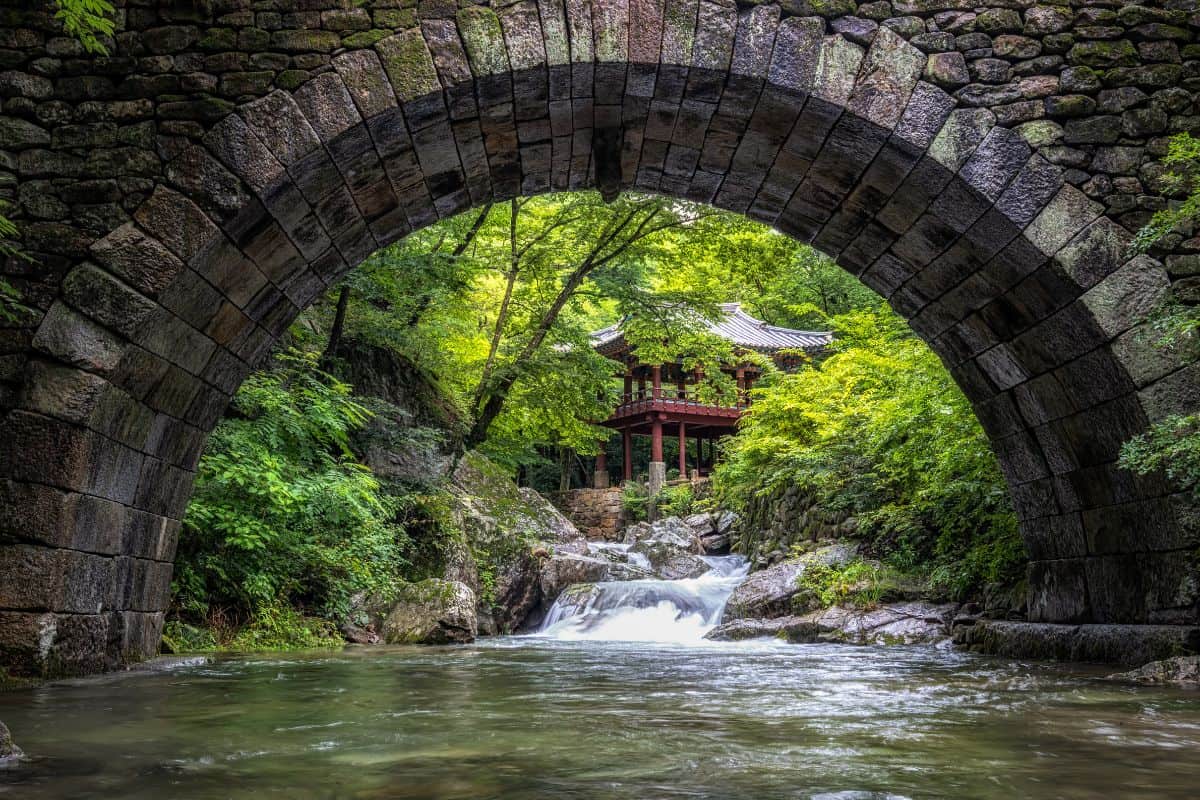
Bonghwasan Mountain
Hours: 24 hours, 7 days a week
Bonghwasan Mountain in Suncheon-si, South Jeolla stands at 337 meters, offering a great nature escape. Near Eopdong and Mangbok, it has beautiful trails for all hiking levels.
On most of th ehikes you can enjoy scenic views and take photos as you climb. Whether for a gentle walk or a tougher hike, Bonghwasan is a refreshing break from city life. Bring your camera and water; the views are worth it!
Address: San 50 Yongdang-dong, Suncheon, Jeollanam-do, Seoul, South Korea
Hours to Spend: 1-2 hours
Suncheon Open Film Set
Hours: 9am-6pm, Monday to Sunday (except holidays)
If you're a fan of Korean cinema and TV dramas, the Suncheon Open Film Set is an absolute must-visit. Keep in mind, this hidden gem isn't typically included in standard guided tours, so you'll need to carve out time for an independent adventure.
The set beautifully recreates Korea from the 1960s to the 1980s, offering a nostalgic trip back in time. As you wander through the meticulously crafted streets, you'll be transported to bygone eras captured in famous productions. This renowned location has served as the backdrop for over 70 films and dramas, including notable titles like "Pachinko" and "Bread, Love and Dreams."
The site provides an immersive experience where visitors can walk through recreated historical settings and even participate in themed activities. Whether you're a history buff, a photography enthusiast, or simply looking to enrich your travel itinerary, the Suncheon Open Film Set is an unforgettable glimpse into Korea's cinematic past, much like the Busan International Film Festival.
Address: 24 Biryegol-gil, Suncheon-si, Jeollanam-do, Seoul, South Korea
Hours to Spend: 1-2 hours
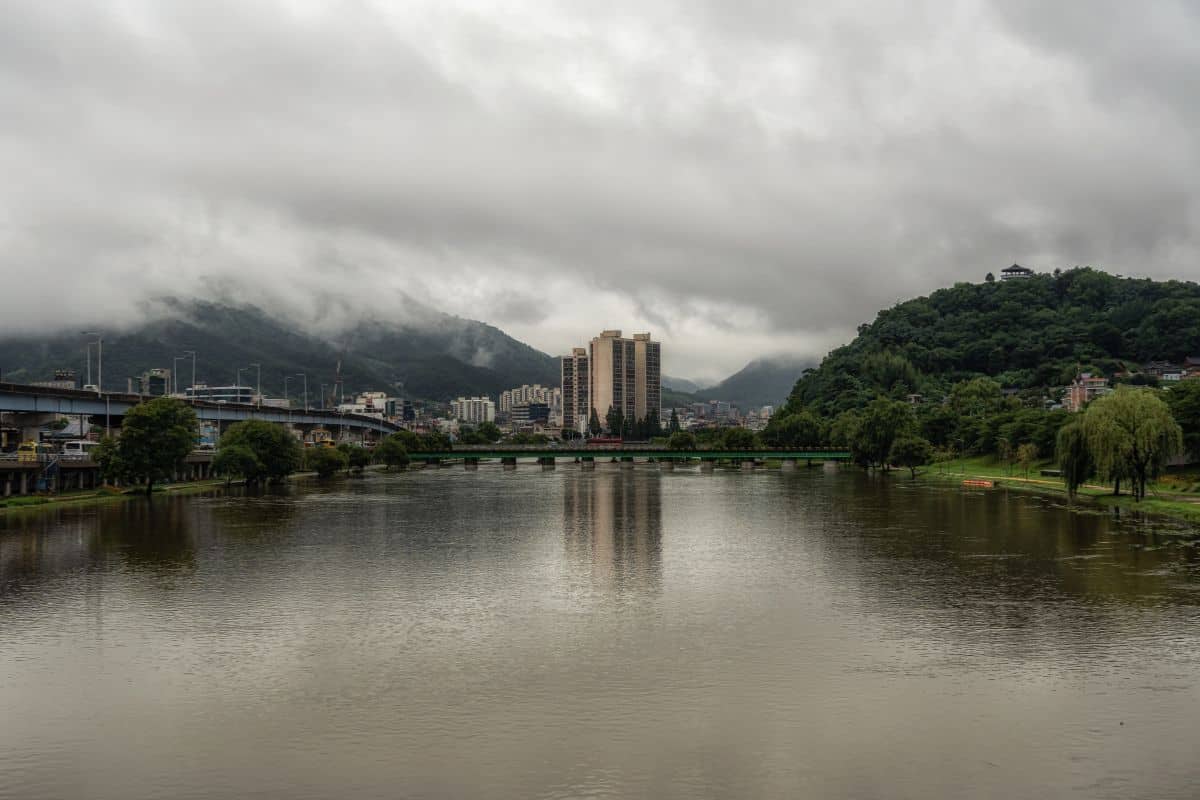
Jungang Market
Hours: 6am-8pm, Monday to Sunday
Opened in 1981, Jungang Market is in Suncheon’s historic city center, making it easy for visitors to reach. This lively market mixes shopping, Korean street food, and cultural sights, while the fashionable street is a favorite among the young people living in Suncheon.
The market’s charm is enhanced by the cultural spaces along the scenic Okcheon Stream, though all food lovers will find plenty to enjoy here. Don’t miss the small intestine hot pot at Jeonwon Sikdang and the Ogane Tteokbokki, made famous by the TV show Running Man.
You’ll also find fresh Korean vegetables sold by elderly vendors, giving a nostalgic feel of local culture.
Address: 18 Jungangsijang-gil, Suncheon-si, Jeollanam-do, Seoul, South Korea
Hours to Spend: 2-3 hours
Jorye Lake Park
Hours: 8am-9pm, Monday to Sunday
Jorye Lake Park in Suncheon is a great place to relax away from the city; with peaceful lake views, it's perfect for a picnic. Just bring a blanket and some Korean snacks, and find a nice spot under the trees to enjoy the calm waters. The park also has good paths for a refreshing run, but one highlight is the food nearby, including several foreign restaurants.
Address: 20 Wangji 2-gil, Suncheon-si, Jeollanam-do, South Korea
Hours to Spend: 1-2 hours
🙋 Frequently Asked Questions
The best way to explore Araetjang outdoor market is to wander through the maze of vendors and soak in the lively atmosphere, similar to the night markets in Seoul. Throughout the day you can sample the delicious street food such as tteokbokki, hotteok, and freshly made seafood delicacies.
Visitors to Seonamsa Temple can expect to experience a peaceful escape from city life. Notable sights include two lovely rainbow-shaped bridges, with Seung-seon Bridge being a National Treasure of South Korea, though visitors can also join a temple stay to experience monastic life and enjoy a delicious meal at a nearby restaurant serving delicasies known as sanche-jeongsik.
The Dongcheon River is significant for bird watchers due to its status as a Ramsar Wetland, hosting over 200 bird species. The river's clean waters provide plenty of food and habitat, supporting a rich ecosystem. Whether you are an experienced bird-watcher or simply love nature, this river offers excellent opportunities for exploration and bird-watching.
The Suncheon Open Film Set is a must-visit for fans of K-cinema because it beautifully recreates Korea from the 1960s to the 1980s, offering a nostalgic trip back in time. The set has served as the backdrop for over 70 films and Korean dramas, providing an immersive experience where visitors can walk through historical settings and participate in themed activities.
Jorye Lake Park offers peaceful lake views, making it an ideal location for a picnic. Visitors can bring a blanket and snacks to enjoy under the trees by the calm waters, though the park also features good paths for a refreshing run, and there are several good places to eat nearby, including foreign restaurants,.

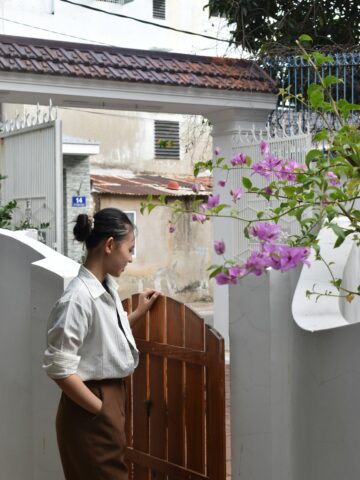
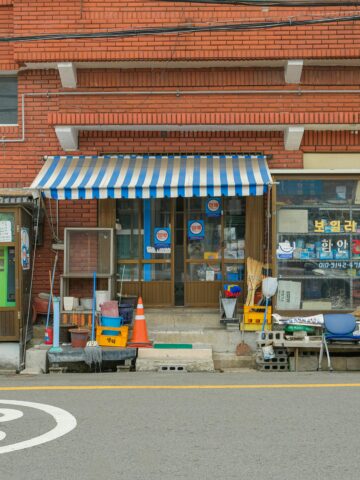
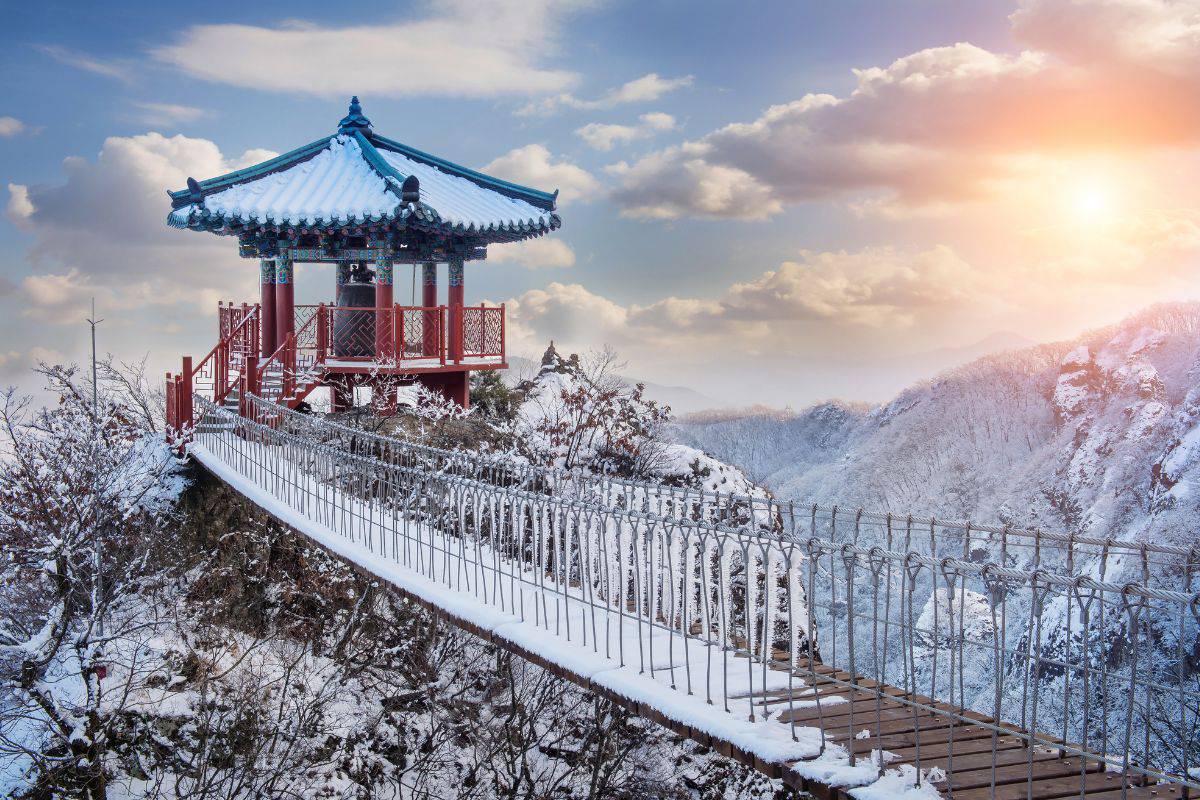
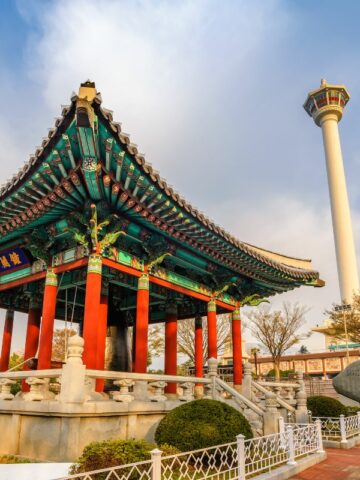
Comments
No Comments